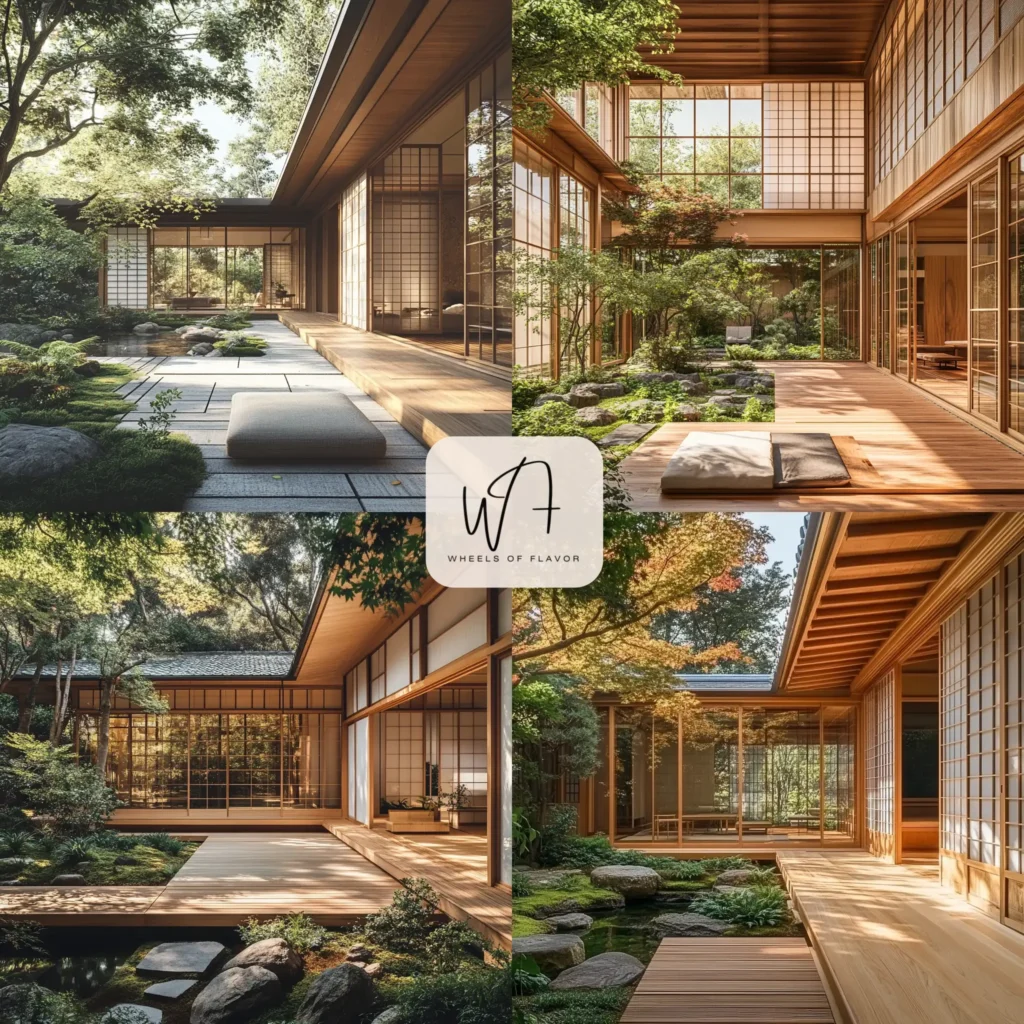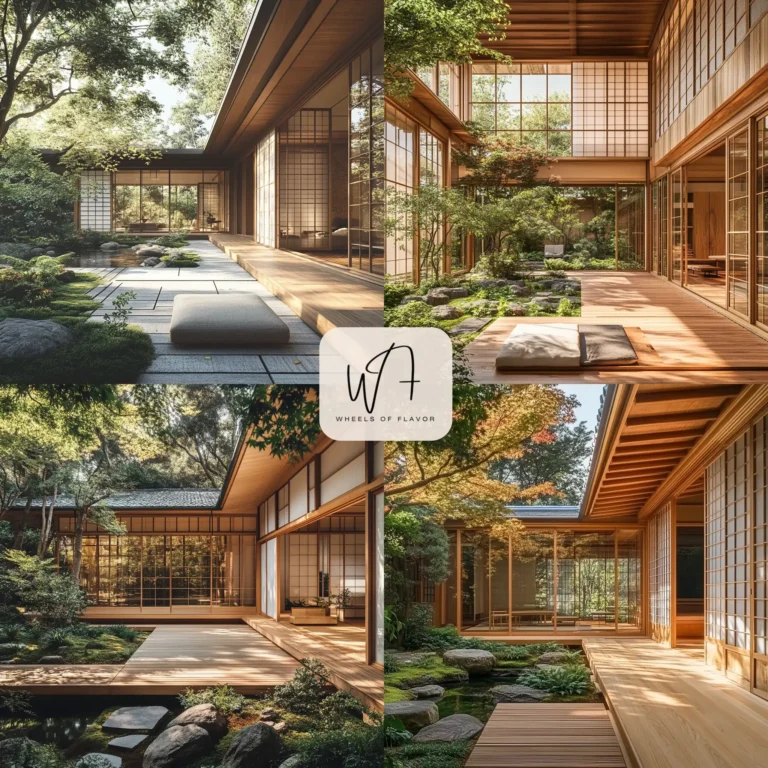Captivating Japanese houses are renowned for their serene aesthetics, minimalist design, and harmonious connection with nature. These homes embody a unique blend of traditional craftsmanship and modern innovation, creating spaces that inspire tranquility and balance. From sliding shoji screens to open-concept layouts, Japanese architecture offers timeless lessons in simplicity and functionality. In this article, we’ll explore 14 stunning examples of captivating Japanese houses, their defining features, and why they continue to influence global design trends.
Table of Contents
What Makes Japanese Houses So Captivating?
Japanese homes are more than just living spaces—they’re a lifestyle. Rooted in Zen philosophy, these houses prioritize simplicity, natural materials, and a deep respect for the environment. The use of wood, bamboo, and paper, combined with open layouts, creates an airy, peaceful atmosphere. Whether it’s a traditional machiya townhouse or a modern minimalist masterpiece, captivating Japanese houses stand out for their ability to balance form and function.
For those interested in interior design trends, Japanese aesthetics offer endless inspiration. Check out more styles on our Styles and Trends page.
Key Features of Captivating Japanese Houses
Here are some defining elements that make Japanese homes so unique:
- Minimalism: Clutter-free spaces with clean lines and neutral palettes.
- Natural Materials: Wood, stone, and paper create warmth and authenticity.
- Sliding Doors: Shoji screens and fusuma panels allow flexible room configurations.
- Engawa: Verandas that blur the line between indoor and outdoor spaces.
- Tatami Mats: Traditional flooring that adds comfort and cultural significance.
These features not only enhance the aesthetic appeal but also promote a sense of calm and mindfulness.
14 Examples of Captivating Japanese Houses
Let’s dive into 14 breathtaking Japanese homes that showcase the beauty of this architectural style.
1. The Traditional Kyoto Machiya
Kyoto’s machiya are narrow wooden townhouses that combine residential and commercial spaces. With lattice facades and inner courtyards, these captivating Japanese houses preserve history while adapting to modern needs.
2. The Modern Zen Retreat
Located in the countryside, this minimalist home features floor-to-ceiling windows and a central garden, embodying the essence of Zen. Its open layout fosters a seamless connection with nature.
3. The Urban Micro-Home
In Tokyo, where space is limited, micro-homes maximize efficiency without sacrificing style. These captivating Japanese houses use clever storage and multi-functional furniture to create airy, livable spaces.
4. The Bamboo House
Bamboo is a staple in Japanese architecture. This eco-friendly home uses bamboo for walls, flooring, and even furniture, creating a sustainable yet stunning design.
5. The Mountain Hideaway
Nestled in the Japanese Alps, this house blends rustic charm with modern comforts. Its sloped roof and wooden exterior make it a perfect retreat for nature lovers.
6. The Coastal Serenity House
Inspired by the sea, this home features blue accents and open spaces that reflect the calming waves. It’s a prime example of how captivating Japanese houses adapt to their surroundings.
7. The Urban Loft with Tatami
This modern loft incorporates traditional tatami mats into a sleek, urban design, proving that Japanese aesthetics can thrive in contemporary settings.
8. The Paper House
Using translucent shoji screens, this home creates a soft, diffused light that enhances its serene ambiance. It’s a masterpiece of minimalist design.
9. The Forest Cabin
Surrounded by trees, this cabin uses natural wood and large windows to create a cozy, immersive experience. It’s a perfect example of how captivating Japanese houses blend with nature.
10. The Modular Micro-Village
A cluster of small, modular homes, this innovative design promotes community living while maintaining individual privacy. Each unit is a testament to Japanese ingenuity.
11. The Floating House
Built on stilts over a small pond, this home creates the illusion of floating. Its reflective surroundings amplify its serene beauty.
12. The Urban Rooftop Oasis
In dense cities, rooftop gardens are a hallmark of captivating Japanese houses. This home combines greenery with modern architecture for a tranquil escape.
13. The Converted Warehouse
Once an industrial space, this warehouse was transformed into a spacious home with exposed beams and tatami rooms, blending old and new seamlessly.
14. The Off-Grid Eco House
This sustainable home uses solar panels and rainwater harvesting, proving that captivating Japanese houses can be both beautiful and environmentally conscious.

Why Japanese Architecture Inspires Global Design
Japanese houses have influenced architects worldwide, from Frank Lloyd Wright to modern minimalists. Their emphasis on simplicity, sustainability, and harmony resonates with today’s eco-conscious and wellness-focused trends. For more insights into global design influences, check out this in-depth article on architectural trends from ArchDaily.
How to Incorporate Japanese Design into Your Home
You don’t need to live in Japan to embrace the principles of captivating Japanese houses. Here are some practical tips:
- Declutter: Embrace minimalism by keeping only essential items.
- Use Natural Materials: Incorporate wood, bamboo, or stone in furniture and decor.
- Add Sliding Panels: Install shoji-inspired screens for flexible spaces.
- Create a Zen Corner: Designate a quiet area with plants and simple furnishings.
- Maximize Natural Light: Use large windows or sheer curtains to let in soft light.
Explore more home styling ideas on our Styles and Trends page.
The Future of Captivating Japanese Houses
As sustainability becomes a global priority, Japanese architecture is leading the way with eco-friendly designs. From modular homes to off-grid solutions, these houses are adapting to modern challenges while staying true to their roots. The timeless appeal of captivating Japanese houses ensures they’ll continue to inspire for generations.
FAQs About Captivating Japanese Houses
What defines a Japanese house?
Japanese houses are characterized by minimalist design, natural materials like wood and paper, and features like sliding doors and tatami mats. They emphasize harmony with nature and simplicity.
How can I make my home look like a Japanese house?
Incorporate minimalist furniture, natural materials, and open spaces. Add elements like shoji screens, tatami mats, or a small Zen garden for authenticity.
Are Japanese houses eco-friendly?
Many modern Japanese houses use sustainable materials and energy-efficient systems, making them environmentally friendly. Traditional designs also prioritize natural ventilation and lighting.
Why are Japanese houses so small?
In urban areas, limited space and high land costs lead to smaller homes. Japanese architecture maximizes efficiency through clever design and multi-functional spaces.
Where can I learn more about Japanese architecture?
Explore resources like ArchDaily for in-depth articles or visit our Styles and Trends page for more inspiration.

